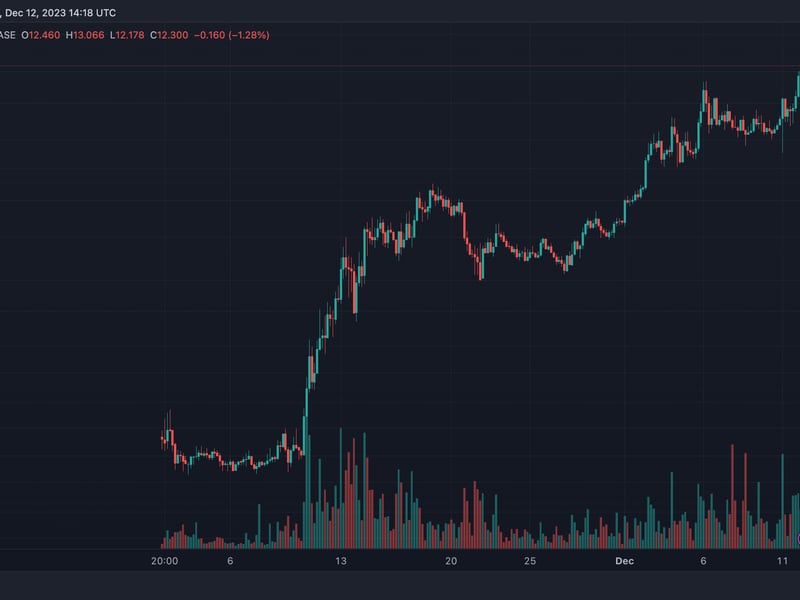The Art of Cutting Losers and Letting Winners Run in Crypto Trading

One of the most important rules for trading financial markets is cutting losses quickly and letting winners run.
Generally, you want to let your trades that are in the green run as long as the market is willing to provide.
Conversely, you should cut your losses and exit the position to preserve your capital when you immediately identify that a trade is going/staying south. In other words, the trade is not going to come through and you’d be better off cutting your losses and reducing your risk exposure.
The idea is to provide those trades that are in profit with room to develop without self-sabotaging your own position. Doing so while conditions are favorable is key, rather than closing on a trade prematurely and losing out on potential gains.
Sounds simple right? Well, it’s not always so easy.
That losing feeling
This fundamental rule set for trading winners and losers is widely known, but it is often forgotten by both novice and professional retail investors alike, as emotions tend to take charge.
“Sure” you say, “I can manage that and keep my emotions in check,” but the reality is that no one is that robotic in nature, and nobody knows 100 percent of the time the correct direction that the price will take.
As human beings, we are prone to “loss aversion” – a tendency to ignore or avoid losses. Hence, we tend to let our losers run, in order to avoid taking a loss.
Identifying when a trade is heading south is the difference between stubborn financial ruin and modest success (with the latter obviously being the preferred option).
However, research suggests that despite knowing the obvious and most logical course of action to take, people will sometimes deviate from that path and experiment. Yet, experimenting with your money or your trades is a one-way ticket to “Rect City” when making investments.
Instead, work on a series of rules/guidelines that you follow – and stick to them. By vetting any inconsistencies that don’t align with the mantra of “cut your losses,” you can severely limit your risk and exposure to the market.
Fighting instinct
In essence, successful traders possess a very particular type of personality and mental psychology that allows them to look at a piece of information without snap judgement.
The instinct to know when to cut or exit a trade comes from experience and the ability to cultivate value from your stringent trading rules is what separates the novice from the professional.
Confirmation bias also presents a problem, wherein you attempt to be “right” as opposed to remaining objective and on course with following the aforementioned rules.
The toxicity of emotions in trading cannot be overstated, so cut those losses and let your winners ride a little while longer, especially if you see no reason to end the trade then and there.
So what to do?
Here are some rules that could help you master the art of letting winners run and cutting losers:
Trading is the opposite of investing: Both trading and investing involve seeking profit, but they pursue that goal in different ways. Investing essentially involves betting on an idea that is likely to lead the economic growth, say 10 years from now. So, hope is an inherent part of investing.
Hope, however, has no place in trading, as it usually involves leverage. As a result, holding onto loss-making positions on the hope that it would eventually recover lost ground only yields deeper mark-to-market losses (ask a futures trader).
Remember you are a trader: When in a loss, most traders go from being speculators to long-term investors in no time, citing sound long-term fundamentals. That kind of a sudden role switch often leads to trading disasters, as speculative bets usually involve high leverage. So, eventually, a big drawdown forces a trader to accept their folly and move out of markets.
Revenge trading is a big no: Revenge trading is that irrational desire to win back losses in the shortest possible time and usually from the same market that you lost money in. That again leads to traders taking quick profits and letting losers run, leading to even deeper drawdowns. The best thing to do after a big loss is to sit on the sidelines for a few days.
Avoid win-rate fixation: Most traders, especially beginners, are always looking for a high win rate in the ratio of wins and losses. From our childhood, we are rewarded for being right, so having a high win rate is more satisfying. That obsession with having a high win rate, however, is what drives traders to take quick profits.
If we take quick losses and allow the winners to run, our win rate might be between 50 to 60 percent. However, we would be making more money on our good trades compared to what we would lose on bad trades.
Remember, the captain of Titanic was only wrong once. It is the size of the mistake that matters and not the number.
Disclosure: The author holds no cryptocurrency at the time of writing.
Stock chart image via Shutterstock









